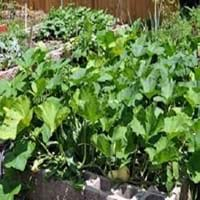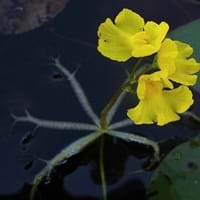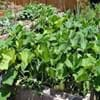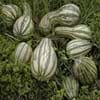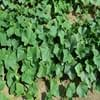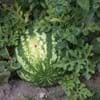Life Span
Annual
Annual and Perennial
Origin
North America, Mexico, Central America, South America
World/Pandemic
Types
Neck, Really Big Hybrid, Waltham
Utricularia graminifolia, Utricularia vulgaris, Utricularia gibba
Number of Varieties
Not Available
Habitat
Cultivated Beds
Lakes, stream banks
USDA Hardiness Zone
9-11
Not Available
AHS Heat Zone
12-1
Not Available
Sunset Zone
A1, A2, A3, H1, H2, 1a, 1b, 2a, 2b, 3a, 3b, 4, 5, 6, 7, 8, 9, 10, 11, 12, 13, 14, 15, 16, 17, 18, 19, 20, 21, 22, 23, 24
21,22
Habit
Prostrate/Trailing
Spreading
Flower Color
Yellow, Gold
Yellow, Purple, Lavender
Flower Color Modifier
Bicolor
Not Available
Fruit Color
Peach, Tan
Non Fruiting Plant
Leaf Color in Spring
Green, Dark Green
Not Available
Leaf Color in Summer
Green, Dark Green
Not Available
Leaf Color in Fall
Green, Dark Green, Yellow green
Not Available
Leaf Color in Winter
Not Available
Not Available
Leaf Shape
Heart-shaped
Orbicular
Plant Season
Summer, Fall
Spring, Summer, Fall
Sunlight
Full Sun
Full Sun
Growth Rate
Very Fast
Medium
Type of Soil
Loam
Not Available
The pH of Soil
Neutral
Acidic, Neutral
Soil Drainage
Well drained
Not Available
Bloom Time
Early Summer, Summer, Indeterminate
Not Available
Tolerances
Drought
Wet Site
Where to Plant?
Container, Ground, Pot
In Water
How to Plant?
Seedlings
Divison, Seedlings
Plant Maintenance
Medium
Medium
Watering Requirements
Average Water Needs
Requires 4 to 8 inches of water above the soil line
In Summer
Lots of watering
Lots of watering
In Spring
Moderate
Moderate
In Winter
Average Water
Average Water
Soil pH
Neutral
Acidic, Neutral
Soil Type
Loam
Not Available
Soil Drainage Capacity
Well drained
Not Available
Sun Exposure
Full Sun
Full Sun
Pruning
Remove damaged leaves, Remove dead branches, Remove dead leaves, Remove dead or diseased plant parts
Cut away fading foliage, Remove damaged leaves, Remove dead branches, Remove dead leaves
Fertilizers
Apply 10-10-10 amount, Apply 12-12-12 amounts, Nitrogen, Phosphate, Potassium
All-Purpose Liquid Fertilizer
Pests and Diseases
Red blotch
hair algae
Plant Tolerance
Drought
Wet Site
Flower Petal Number
Single
Not Available
Foliage Texture
Coarse
Fine
Foliage Sheen
Matte
Matte
Attracts
Ants, Bees
Insects
Allergy
Dermatitis
Avoid during Pregnancy
Aesthetic Uses
Not Used For Aesthetic Purpose
Showy Purposes, Water gardening
Beauty Benefits
Glowing Skin, Good for skin and hair
Not Available
Environmental Uses
Air purification
Air purification
Medicinal Uses
Antiasthamatic, anti-cancer, anti-inflammatory, Cardiovascular problems, cholesterol-lowering, constipation, Diabetes, Fiber, High blood pressure, Immunity, Manganese, Rich in Potassium, Vitamin A, Vitamin C, Vitamin E
Diuretic, Vulnerary
Part of Plant Used
Flowers, Fruits, Leaves, Seeds
Leaves, Root
Other Uses
For making oil, Used As Food
Food for animals, Showy Purposes
Used As Indoor Plant
Yes
Insignificant
Used As Outdoor Plant
Yes
Yes
Garden Design
Edible, Herb / Vegetable, Vine
Bog Garden, Container, Water Gardens, Wildflower
Botanical Name
CUCURBITA moschata 'Quantum'
UTRICULARIA
Common Name
Butternut Squash
Bladderwort
In Hindi
Butternut Squash Plant
Bladderwort plant
In German
Butternut Squash-Anlage
bladderwort Pflanze
In French
Courge musquée Plante
plante Bladderwort
In Spanish
Planta de la calabaza de Butternut
planta bladderwort
In Greek
Κολοκύθια Φυτών
φυτό υδρόβιο φυτό
In Portuguese
Butternut Squash planta
planta bladderwort
In Polish
Piżmowa roślin
Bladderwort roślin
In Latin
Planta butternut cucurbitae
bladderwort herba
Phylum
Magnoliophyta
Magnoliophyta
Class
Magnoliopsida
Magnoliopsida
Order
Violales
Scrophulariales
Family
Cucurbitaceae
Lentibulariaceae
Genus
Cucurbita
Utricularia
Clade
Angiosperms, Eudicots, Rosids
Angiosperms, Asterids, Eudicots
Tribe
Not Available
Not Available
Subfamily
Papilionoideae
Pitcairnioideae
Season and Care of Butternut Squash and Bladderwort
Season and care of Butternut Squash and Bladderwort is important to know. While considering everything about Butternut Squash and Bladderwort Care, growing season is an essential factor. Butternut Squash season is Summer and Fall and Bladderwort season is Summer and Fall. The type of soil for Butternut Squash is Loam and for Bladderwort is Not Available while the PH of soil for Butternut Squash is Neutral and for Bladderwort is Acidic, Neutral.
Butternut Squash and Bladderwort Physical Information
Butternut Squash and Bladderwort physical information is very important for comparison. Butternut Squash height is 7.62 cm and width 50.80 cm whereas Bladderwort height is 10.00 cm and width 5.00 cm. The color specification of Butternut Squash and Bladderwort are as follows:
Butternut Squash flower color: Yellow and Gold
Butternut Squash leaf color: Green, Dark Green
Bladderwort flower color: Yellow, Purple and Lavender
- Bladderwort leaf color: Not Available
Care of Butternut Squash and Bladderwort
Care of Butternut Squash and Bladderwort include pruning, fertilizers, watering etc. Butternut Squash pruning is done Remove damaged leaves, Remove dead branches, Remove dead leaves and Remove dead or diseased plant parts and Bladderwort pruning is done Cut away fading foliage, Remove damaged leaves, Remove dead branches and Remove dead leaves. In summer Butternut Squash needs Lots of watering and in winter, it needs Average Water. Whereas, in summer Bladderwort needs Lots of watering and in winter, it needs Average Water.
